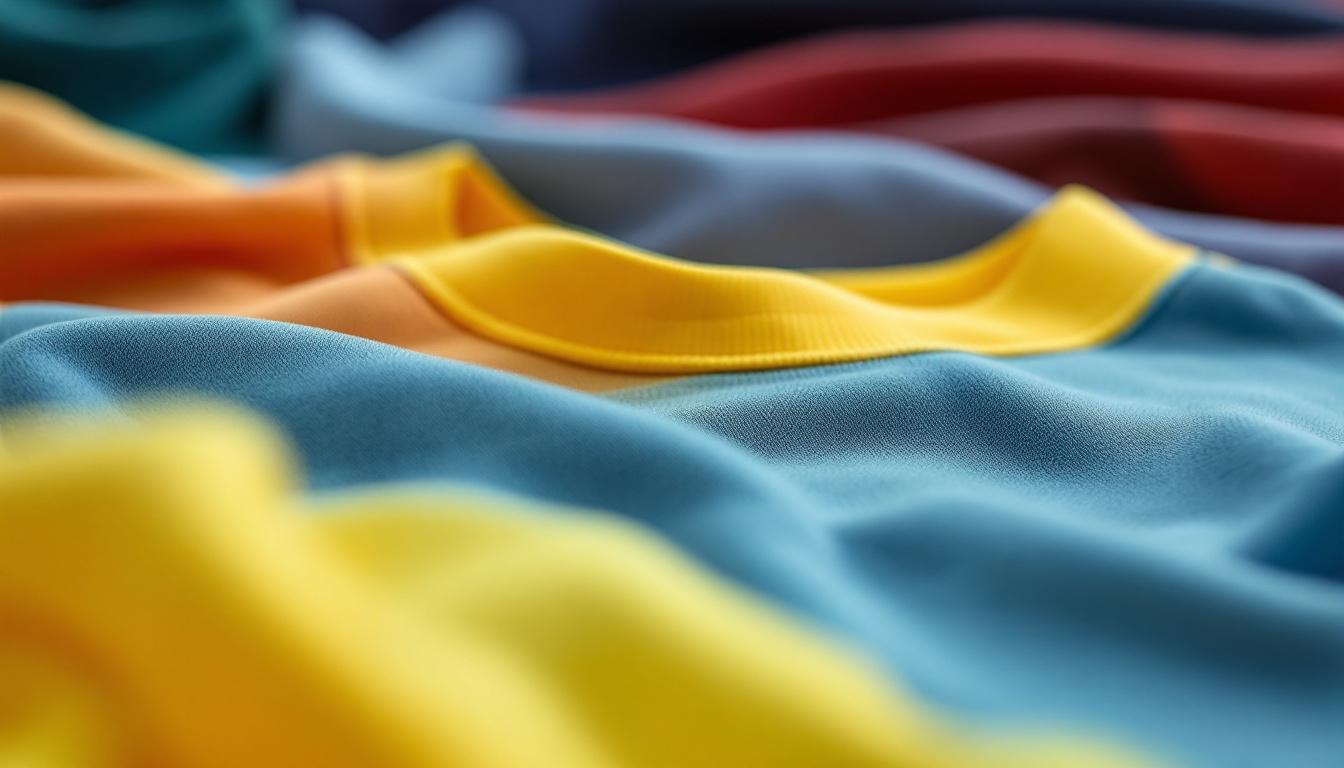
What makes a good running T-Shirt
Share
Choosing the perfect running T-shirt might seem like a simple task - just grab the first breathable shirt you see, right? Well, not quite. The right running shirt can make the difference between a joyful jog and a sweaty, chafing nightmare. Whether you’re pounding the pavement or hitting the trails, understanding what makes a running T-shirt tick is key to comfort, performance, and maybe even style points (because yes, your shirt does matter).
Material Matters: The Fabric Behind the Sweat
When it comes to running shirts, the fabric is the unsung hero. It’s the material that keeps you dry, comfortable, and odor-free - or, if you’re unlucky, the culprit behind that clingy, sweat-soaked misery.
Common Fabrics and Their Superpowers
Most running shirts are made from synthetic fibers like polyester, nylon, polypropylene, and spandex. These materials are popular because they excel at moisture-wicking -drawing sweat away from your skin to the shirt’s surface where it can evaporate. Polyester, in particular, is a superstar in this category, widely used for its ability to keep runners dry and comfortable during intense workouts. Additionally, the lightweight nature of these fabrics allows for increased breathability, ensuring that air circulates freely, which is crucial for temperature regulation during those long runs.
Natural fibers like merino wool and bamboo are also gaining traction. Merino wool is a bit of a miracle fabric: it not only wicks moisture and dries quickly but is also naturally antimicrobial, helping to keep those post-run odors at bay. This means that even after a grueling session, you can feel fresh and ready for whatever comes next. Bamboo shares some of these properties and offers a soft, eco-friendly alternative for those who want to stay green while they sprint. Its natural breathability and UV protection make it an excellent choice for outdoor runners who are exposed to the elements, providing comfort and safety in one package.
The Rise of Sustainable Fabrics
Running gear is getting greener. By 2026, it’s predicted that 70% of premium running brands will embrace circular economy principles, recycling materials and minimizing waste. This is not just a marketing gimmick; it represents a fundamental change in how the industry approaches production and consumption. The use of recycled materials not only reduces the need for virgin resources but also lessens the carbon footprint associated with manufacturing new fabrics. So, the next time you pick out a running shirt, you might just be helping save the planet - one stride at a time.
Performance Features: More Than Just Fabric
Running shirts today are engineered with more than just fabric choices in mind. The design and technology integrated into these shirts can significantly enhance your running experience.

Moisture-Wicking and Quick-Drying
Moisture management is the cornerstone of any good running shirt. Fabrics like polyester and nylon are prized for their ability to wick sweat away from the skin and dry rapidly. This keeps you feeling light and cool, even when you’re pushing your limits. The combination of these synthetic fibers with a bit of spandex or elastane adds stretch, allowing for freedom of movement without restriction. Additionally, many brands are now incorporating advanced technologies such as hydrophilic finishes that enhance moisture absorption, ensuring that sweat is pulled away from the body even more effectively. This innovation not only improves comfort but also helps regulate body temperature during intense workouts.
Seamless Comfort: Flatlock and Bonded Seams
Chafing is the enemy of every runner. The secret weapon? Smooth, low-profile stitching techniques like flatlock or bonded seams. These seams lie flat against your skin, reducing friction and preventing that dreaded chafe rash. When you’re running for miles, the last thing you want is your shirt turning into a torture device. In addition to these innovative seam techniques, many running shirts also feature strategically placed panels that enhance airflow and flexibility, further minimizing the risk of irritation. These design elements not only contribute to a more comfortable fit but also allow for a greater range of motion, making it easier to tackle those long runs or challenging trails without distraction.

Breathability and Ventilation
Good running shirts also focus on breathability. Mesh panels or strategically placed ventilation zones allow for better airflow, helping to regulate your body temperature. This is especially important during long runs or races where overheating can sap your energy and focus. Moreover, many brands are now incorporating moisture-wicking technology that draws sweat away from your skin, keeping you dry and comfortable. This is crucial not only for maintaining performance but also for preventing chafing, which can be a painful distraction during a race. The combination of breathability and moisture management creates a perfect synergy that allows runners to push their limits without the discomfort of traditional fabrics.
Fit and Function: The Perfect Cut for Every Runner
Even the best fabric and technology can’t save a shirt that doesn’t fit well. Fit is crucial - not too tight to restrict movement or cause discomfort, and not too loose to flap in the wind or cause chafing. A well-fitting shirt not only enhances performance but also boosts confidence, allowing runners to focus on their pace and breathing rather than adjusting their gear mid-stride.

Stretch and Mobility
Incorporating spandex or elastane into the fabric blend gives running shirts the stretch they need to move with your body. This flexibility supports a full range of motion, whether you’re sprinting, climbing hills, or doing your victory dance at the finish line. Additionally, moisture-wicking properties in these fabrics help to keep sweat at bay, ensuring that you stay dry and comfortable throughout your run. This is especially important during long-distance events where chafing can become a significant issue, making the right fabric choice critical for maintaining comfort over the miles.
Putting It All Together: Choosing Your Ideal Running Shirt
Whether you’re a casual jogger or a marathon warrior, investing in a quality running shirt pays off in comfort and performance. And with sustainability becoming a bigger focus, you can feel good about your gear choices too.
Quick Checklist for Your Next Running Shirt
- Fabric: Look for polyester, nylon, or merino wool blends.
- Moisture Management: Must wick sweat and dry quickly.
- Odor Control: Natural antimicrobial properties are a bonus.
- Seams: Flatlock or bonded seams to prevent chafing.
- Fit: Stretchy, comfortable, with a longer back hem.
- Sustainability: Consider recycled materials.
Next time you’re gearing up for a run, remember: your shirt isn’t just a shirt. It’s your trusty sidekick on every mile.
Running Clothing
Check out our range or running clothes and activewear to wear on your next run.
